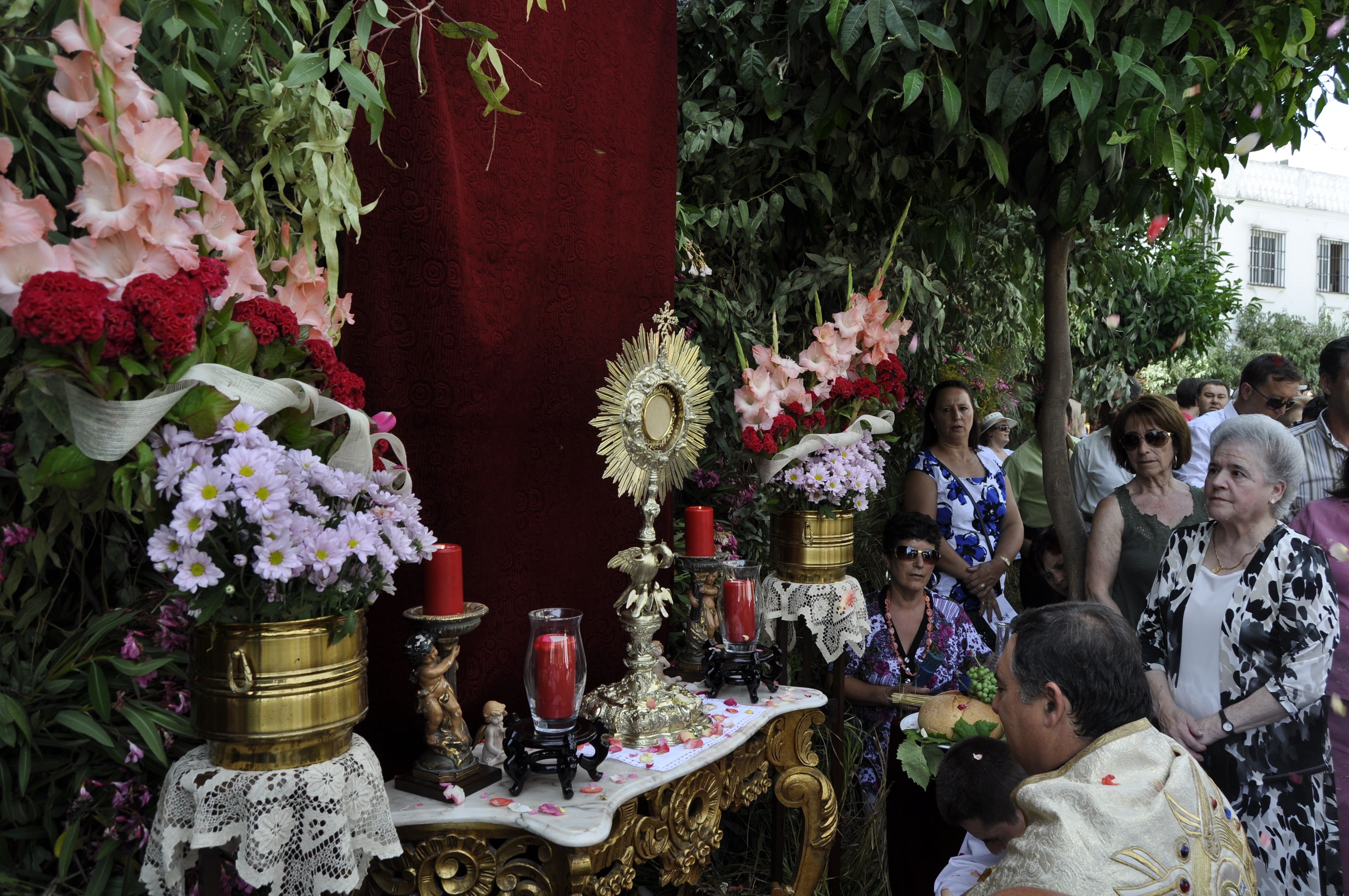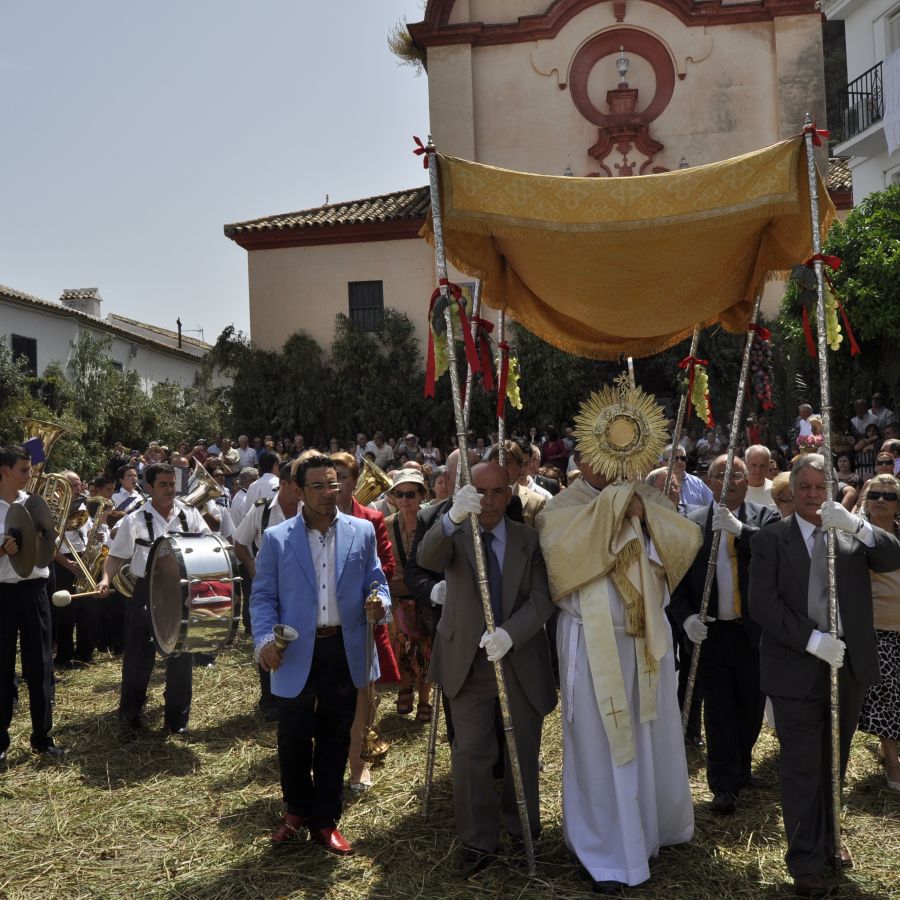Historia.

José y Jesús de las Cuevas.
El día del Santo.
In all of these towns, Corpus Christi is the Day of the Saint. Starting at dawn -in June dawn is at about five o’clock- horses loaded with branches, brambles and broom from the hills enter the town. Zahara possesses some of the most beautiful undergrowth in the world, from gorse to mastic, and there is more than enough to cut. By nine o’clock in the morning, the appearance of the town has changed. Branches, or entire trees, cover the walls of all the houses, higher than the second-floor balconies. Some require forty or fifty loads of branches for their façade alone. Draped over these, and still showing the creases from the chest of drawers, are the rich fabrics preserved in the houses of old towns for such occasions. Also to be seen are the indescribable golden quilts, which in the morning light and seen against the green, gleam like topaz, and the lace. There are houses where the vegetation has covered the façade, and it is then necessary to chop a hole in order to go in. The ground is thickly carpeted in sedge, with a pungent smell of river.
At twelve o’clock, treading this close-knit vegetal carpet, the procession leaves the church. It is a tiny procession, but nonetheless beautiful. The silver banner goes in front, with its carved lamb and its little bells. The pallium, with its silver poles, and the priest, holding the monstrance, and the 17th century robes, with the gold glinting in the sun. Frequently, to go through the vegetal tunnel into which the streets have been transformed, those who bear the pallium have to push aside the curving branches in order to pass. At each corner, at the door of each house, a small altar has been erected. A table covered with damask, and on this, “the best of the house” -as Rafael Laffón, the poet, observed. The procession then comes to a halt, and you have no idea how the ancient silverware from the house glitters in the light of the candles in candlesticks against the emerald background of the forest clinging to the walls.
After the procession, the festive day erupts. Natives of Zahara have come from far and wide for the great day. The families greet each other, or meet each other. Bottles are opened. With the heat, the smell of cut vegetation is even more pungent. The market gardeners of Bocaleones, whose pears are still bought by muleteers coming from all over Andalusia,as in the times of Rodrigo Caro, drink the local red wine. In the square, personages only to be found in modest, far-off villages offer their wares: the seller of honeyed sweetmeats, the old woman selling cardboard dolls at two pesetas, the hand-cranked roundabout where the owner encourages and livens up the children with a sort of ritual chant:
-<<Do you feel giddy?>>. The children chirp back: -<<¡Nooo!>>). -<<Are you tired?>>. -<<¡Nooo!>>. -<<Have you eaten?”>>. -<<¡Nooo!>>. -<<Do you want more, then?. -<<Yeeeees…!>>.


